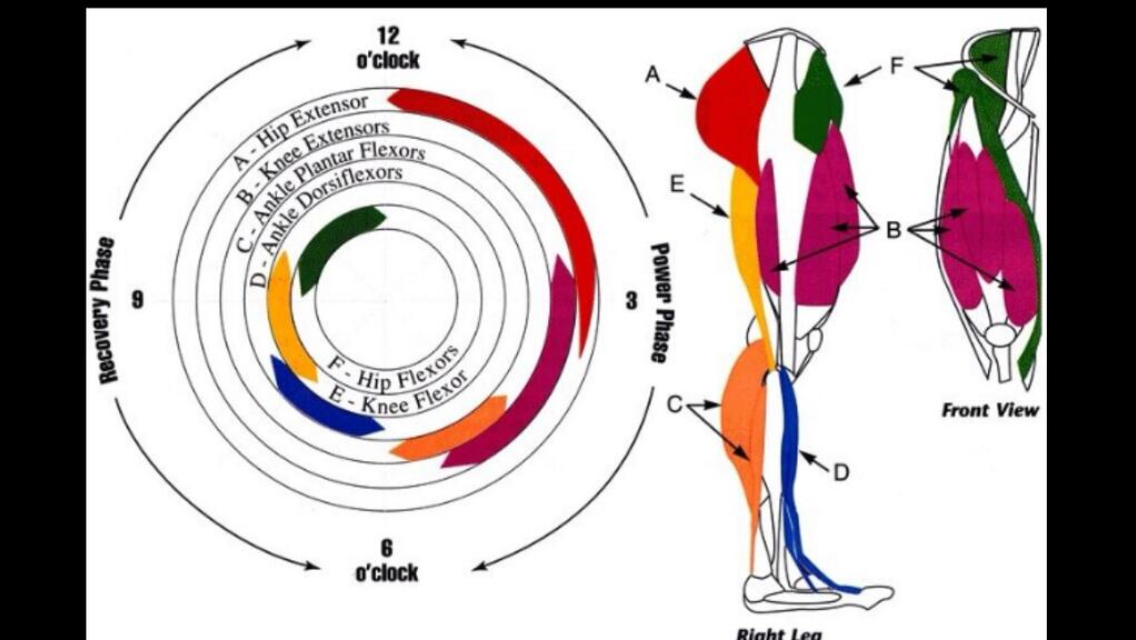Cycling ScienceOver the past few years, the popularity of recreational road cycling has significantly increased. I should know as I finally got on a road bike this year and absolutely love it! Cycling is low impact and non-weight bearing which results in fewer injuries when compared to other sports, and this may play a role in the attractiveness of cycling at any age. The sport includes long-distance endurance cycling and high intensity efforts when sprinting or hill climbing. As a result, cyclists need to train both aerobically (“with oxygen”) and anaerobically (“without oxygen”). The main energy currency used all over the body is Adenosine triphosphate (ATP). ATP is broken down to adenosine diphosphate (ADP) which releases energy. ATP is produced along an energy continuum involving three key energy systems: the phosphocreatine (ATP-PC) system, which produces ATP during extremely high-intensity activity lasting up to 30-seconds; anaerobic glycolysis which produces ATP during high-intensity activities from 6-120-seconds; and aerobic metabolism which produces ATP during low-intensity activities, from 120 seconds onwards. Note that there is an overlap in the activation of the energy systems meaning that ATP production occurs with at least two energy systems at one time. Given that road cyclists require both anaerobic and aerobic power, all three of these systems need to be trained. Interestingly, analysis of cycling grand tours such as The Tour de France, reveal that cyclists can spend approximately 20-minutes per day over the individual anaerobic threshold, and when on hilly stages they are riding at high intensities of between 70-90% of their VO2max (the measurement of the maximum amount of oxygen a person can utilise during intense exercise), hence this group of athletes need to be able to tolerate high workloads over long periods of time. They also need to be able to produce brief episodes of high-power outputs, for example when steep climbing or sprinting at the race finish. The pedal cycle consists of the power phase and the recovery phase. During the pushing action of the power phase, the hip and knee joints extend at the same time powered by the hip extensors (gluteal and hamstring muscles) to initiate the movement and the knee extensors (quadriceps muscles) to move the crank forward, and then together they work to gain momentum on the crank to apply a substantial driving force onto the pedals. The plantarflexors of the foot (the calf muscles) contract for a short period following this. During the recovery (upstroke) phase the tibialis anterior engages to dorsiflex the ankle, and the knee and hip flexors contract to draw the pedal back to the top centre of the crank cycle. Overall the quadriceps contraction is almost twice that of the hamstrings. Cycling also requires core, upper back, and upper limb strength to maintain good posture on the bike for prolonged periods. Bath Cycling Physio 01225 683007Aerobic training involves longer duration rides at 60-80% maximum effort. Aside from cardiovascular benefits, this type of training develops type I slow-twitch muscle fibre types, which are very resistant to fatigue. Strength training is advocated because of potential improvements in speed, anaerobic capacity and movement economy, and in postponing the effects of fatigue. Strength training is an anaerobic training modality which can lead to improvements in both the ATP-PC and anaerobic systems. A further benefit of strength training is that it increases the size and strength of muscles fibres, particularly type II fast-twitch fibres. Type II muscle fibres use anaerobic metabolism and provide short bursts of power. These adaptations can result in higher peak power output during cycling and thus an improved power to weight ratio, which is advantageous to cycling performance. High-intensity training for 30-40 seconds followed by a recovery period can also help to influence the ATP-PC system. The pedalling motion and power during cycling is created by the cyclists’ legs, however a strong core is important, particularly when riders are in the saddle for many hours. Many postural muscles contain type I muscle fibres as they need to have endurance capabilities, and core stability training can help to strengthen this group of muscles. Core stability has been described as three co-dependent subsystems: passive (skeleton), active (muscles), and neural control (nerves). Constant communication between all subsystems is required for the maintenance of stability, and exercise programs should aim to incorporate these different aspects. Sports medicine literature describes core stability as the neuromuscular control required to allow the “production, transfer, and control of force and motion to distal segments of the kinetic chain”. In a cyclist, a stable core could help to prevent energy loss by reducing trunk rotation and shoulder movements. Improved core stability also increases pelvic stability and balance in the saddle, which in turn helps to ensure sound lower limb alignment and greater force transmission from the torso to the legs. Core strength and stability also allows for highly coordinated muscle activation patterns to change continually, depending on the demands of the task at hand. Core stability exercises should be aimed at strengthening the scapula-thoracic region and the abdominal, lumbar spine and hip muscles. Our clinic can help you with core stability training, strength and conditioning training, bike fits to ensure optimum positioning on the bike, as well as assistance with any cycling musculoskeletal injuries or problems. Stay safe and happy cycling! Book online
|
AuthorPhysioimpulse Chartered Physiotherapists Archives
June 2024
|
Services |
Get in Touch
|
©


 RSS Feed
RSS Feed

